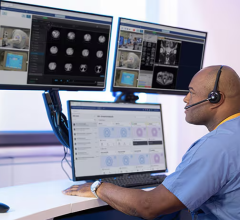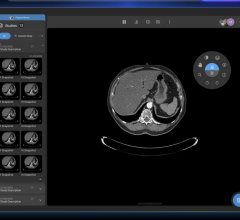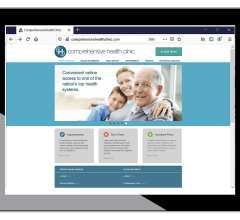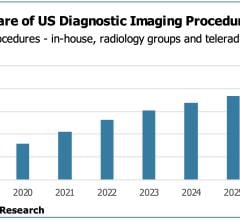Getting into or staying in the imaging business these days takes perseverance with a healthy dose of optimism. The obstacles arrayed against existing and start-up imaging centers are now well-known and formidable. The Deficit Reduction Act (DRA) has eliminated an average of 15 percent to 30 percent of federal reimbursement for reading services. On top of the DRA is a national shortage of radiologists – due mostly to a large percentage of the radiologist workforce transitioning into retirement over the next decade, in combination with increasing demand for radiological services, especially among the United States’ fast-growing aged population. Adding to these challenges is the rising advancement of imaging technology, which in most cases provides significantly more images (e.g., 32-slice CT can yield 500 images or more per case) that radiologists must spend extra time evaluating.
The converging variables of supply, demand, reimbursement and technology have made surviving and prospering in outpatient imaging much more challenging. Not surprisingly, many imaging center owners are meeting the challenge head-on. Teleradiology services, for example – particularly those with innovative RIS/PACS-integrated technology to streamline teleradiology workflow – are increasingly regarded as a desirable solution.
Necessity is the mother of…introspection
Far from “getting out while the getting’s good,” many imaging centers are reacting to a challenging new business environment by turning inward and reevaluating their operations to find ways, for example, to make up reimbursement shortfalls. Solutions have included increasing daily patient volume by extending working hours and expanding their service offerings to attract new patient groups – acquiring digital mammography or a new high field open MRI system, for instance. In addition, through technological advancement in software and network bandwidth, many centers are finding that implementing a teleradiology service is an attractive option not only tactically, but strategically. In other words, teleradiology is moving from a highly focused application – such as exclusively after-hours preliminary reads exclusively, for example – to employing the service in a broader context (prereads and final reads) for a number of strategic reasons. These include:
- Managing periodic or seasonal business increases
- Capturing business from referring physicians who require subspecialty reads
- Shouldering a portion of reads for time-consuming complex cases
- Providing relief for a center’s overworked radiologists through reading a portion of daily routine reads both during work hours and after-hours
- Adding extra reading capacity after acquiring another imaging center or additional modalities
Filling in for vacationing, ill or absent radiologists
No matter how teleradiology services are employed, the most obvious benefit is creating additional capacity to offset revenues lost through the DRA.
Preliminary reads pave the way
In the last five years, advances in teleradiology technology and the availability of sufficient network bandwidth to handle large image datasets have facilitated tremendous growth among teleradiology providers offering preliminary reads. Preliminary reading services perform a useful function for imaging centers limited by reading resources and operational costs particularly during off-hours, and, as a result, these teleradiology service providers have experienced dramatic growth in the United States. (see sidebar at bottom of article)
Limited scope
What the preliminary read doesn’t account for, however, is a broader perspective of the study that also evaluates for any abnormalities not specifically requested. The preliminary reading radiologist is concerned about speed of service in resolving a single clinical question, compared to a final reading radiologist who takes the time to perform a more comprehensive evaluation of the entire study. For the preliminary reading radiologist, there also is limited or complete lack of access to relevant prior images, reports and associated clinical data. Therefore, by necessity, a preliminary report is replaced by a final read report the next business day.
Refining the read
Despite the preliminary read’s narrow scope, the demand for such a service among imaging centers that lack the necessary reading capacity has inspired some teleradiology companies to enhance their offerings with preread and final read services, in addition to subspecialty reads. These more detailed reads entail the transmission of prior reports, relevant prior studies and scanned documents to the teleradiology service provider by whatever means available. By providing the teleradiology service with a rich variety of case-related data, imaging centers can be more confident in sending the teleradiology provider a wide spectrum of studies for interpretation – from common to complex – and in allowing teleradiology radiologists to give a much more comprehensive read that is comparable to the imaging center’s final read.
Until recently, however, offering their imaging center customers these types of enhanced reads has involved a rather complicated and time-consuming workflow to both compile the required data and to transmit the information to the teleradiology service provider. The typical teleradiology company offering such detailed reads compels imaging center customers to closely monitor the initial transmission of the images (current and priors) with clinical data and scanned document images, via a secured Virtual Private Network (VPN), to a teleradiology reading service. A contact at the teleradiology company is responsible to either confirm receipt of the entire clinical data set or to request a re-transmission of some if not all of the information.
Subsequently, to provide the balance of the information required for a comprehensive read, most teleradiology services require the imaging center to manually select relevant prior studies, obtain associated prior reports and scanned documents and transmit this information to the teleradiology service provider. While most teleradiology providers offering these more comprehensive reads have succeeded in reducing the imaging center’s workload, the logistics surrounding this function have increased the disruption and impact to an imaging center’s staff. Typically, a technologist at the imaging center is delegated to gather and transmit the extra necessary data and images, thereby disrupting normal workflow and increasing the potential for human error.
Despite these limitations, the value of teleradiology prereads and final reads is spurring the growth of teleradiology services, even if this expansion is less rapid due to the complexity and disruption involved in delivering services. Nevertheless, one RIS/PACS provider has entered the market recently with a teleradiology software and service offering that significantly improves the teleradiology workflow, and mitigates the complexity and associated operational disruption.
A new paradigm: RIS/PACS-integrated teleradiology
Integrating a teleradiology service with the customer’s RIS/PACS solution eliminates the workflow disruption involved in delivering the extra information and images needed for prereads and final reads to the teleradiology service vendor. With software, such as TeleRead by Merge Healthcare, integrates seamlessly with a company’s RIS/PACS, you essentially create a dedicated teleradiology RIS worklist located with the day-to-day operational RIS worklists. The radiologist simply drops a study into the teleradiology workflow queue with a single mouse-click and the study transmission is initiated – with prior reports, prior image studies, scanned documents and all relevant patient demographics – to a centralized teleradiology data center.
In the case of Merge’s Teleread, automatic routing is enabled – after hours for instance – so the software automatically links the acquired study with prior reports, images, documents and patient data and sends the images and clinical information to a teleradiology data center in Atlanta, Georgia. When the complete image set (current study and priors) with the associated clinical data is forwarded to the designated systems, a worklist assignment is created for reading radiologists in Pune, India. There, the studies are read using the Merge Consult PreReads service, which involves two consulting radiologists who sequentially and independently read each study, review historical patient information and prior studies, select key images, perform measurements and annotations and generate a detailed report. The finished report and key images appear in the designated U.S.-based radiologist’s RIS worklist queue within minutes after the completion of the report. A U.S.-licensed radiologist at the customer site then performs a complete, official final (i.e., third) read and issues a signed report to the referring physician.
Seamlessness integration of RIS/PACS with teleradiology services transforms what typically has been a highly visible, error prone and often disruptive component of imaging center activities into a more transparent, natural extension of business operations.
Thriving in a challenging environment
Despite the tremendous difficulties that imaging centers face today, the willingness with which they have adapted their practices and adopted new technology is preparing them for the future. As a solution, teleradiology directly, cost-effectively addresses key outpatient imaging trends, particularly the radiologist shortage, the burgeoning demand for more radiological services and increased radiologist productivity and the increase in image-intensive studies requiring time-consuming reads. As teleradiology providers themselves respond to these demands by offering comprehensive prereads and final reads (in addition to preliminary reads), ultimately they will need to address how to more efficiently convey the necessary prior reports and image studies to the teleradiology service provider. One RIS/PACS provider, Merge Healthcare, is currently leading the industry with the integration of teleradiology in the RIS/PACS workflow, enabling them to provide customers with comprehensive teleradiology reads with the same ease as those performed within their own in-house workflow.
Mr. Wells is vice president, Teleradiology Services at Merge Healthcare, Milwaukee, WI. For more information: www.mergeteleread.com.


 April 03, 2024
April 03, 2024 








